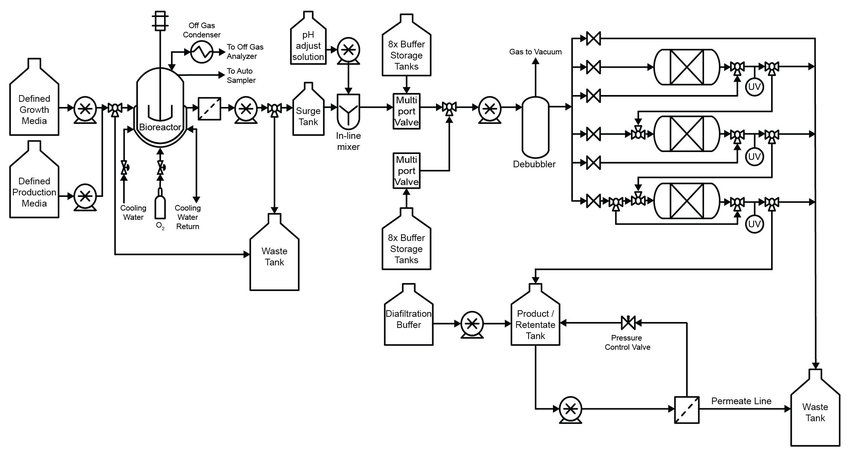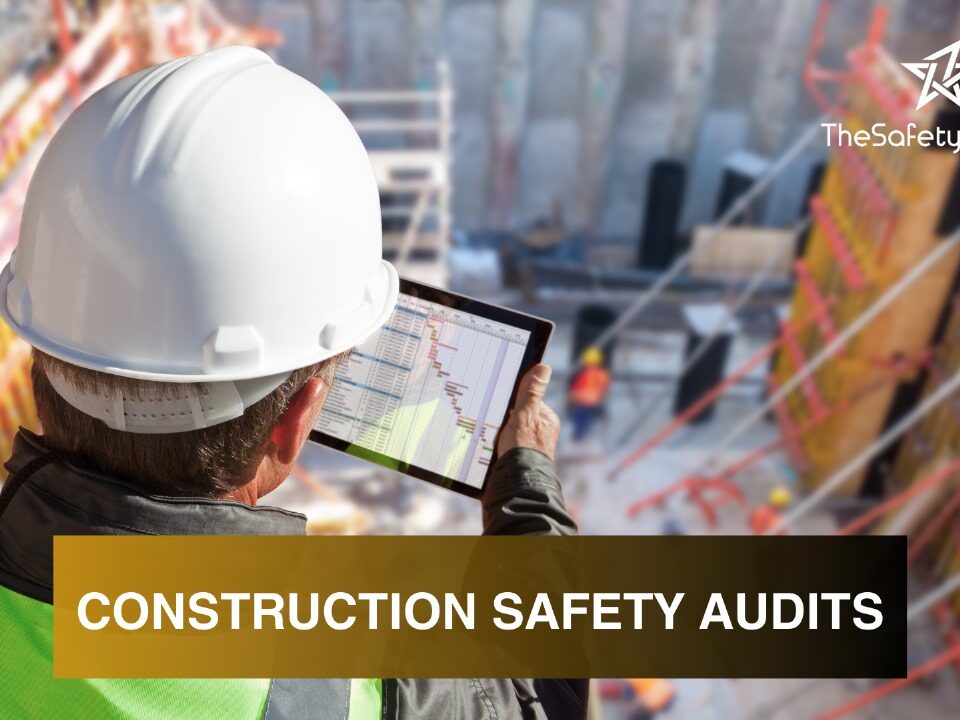Best Practices for Ensuring Comprehensive Health and Safety Assessments for Project Sites

How to Develop an Effective Emergency Response Plan for Your Business
June 12, 2023Fire Risk Assessment Prioritisation Tool (FRAPT) and The Safety Master: Leading Fire Safety Consultants
June 13, 2023Best Practices for Ensuring Comprehensive Health and Safety Assessments for Project Sites
In this article, we delve into the importance of comprehensive health and safety assessments for project sites. Ensuring that your site is free from potential hazards and risks can ultimately save countless lives and prevent hefty fines for noncompliance. We discuss the best practices for conducting thorough assessments, from identifying potential threats to creating an effective safety plan. By following these guidelines, you can greatly reduce the likelihood of accidents and injuries, and rest assured that your project is being carried out in a safe and responsible manner. Stay tuned for our expert tips on how to make your site as secure as possible.
Best Practices for Ensuring Comprehensive Health and Safety Assessments for Project SitesI. Introduction
Ensuring comprehensive health and safety assessments for project sites is not just a legal obligation but also a moral responsibility. Any project site poses potential risks to the workers, the environment, and the surrounding community. Therefore, it is crucial to implement best practices to ensure that all health and safety hazards are accurately identified, assessed, reported, and mitigated.In this article, we will discuss the best practices for ensuring comprehensive health and safety assessments for project sites. We will delve into the objectives of health and safety assessments, their reporting procedures, post-assessment action plans, continuous performance improvement strategies and periodic assessment implementation. We promise to provide practical insights into how you can create a safe working environment while protecting your business interests. By implementing our recommended best practices for health and safety assessments in your project sites, you can minimize risks while optimizing productivity
– Importance of Health and Safety Assessments in Project Sites
Ensuring the Health and Safety of all workers, staff, and visitors in a project site should be fundamental to all projects. Health and safety assessments are a vital part of this process as they provide an avenue for identifying potential hazards and the development of strategies to mitigate them. The benefits of conducting health and safety assessments outweigh the costs, since such assessments can result in a reduction of accidents that may lead to injuries or fatalities.Conducting health and safety assessments is not just a legal requirement but also a moral obligation. It ensures that workers have adequate protection from occupational hazards while on the job site. The consequences of failing to conduct comprehensive health and safety assessments can be catastrophic for both individuals and organizations
Defining Health and Safety Assessments
Defining Health and Safety Assessments:Health and safety assessments are an essential part of risk management processes in project sites. These assessments are designed to identify potential hazards that may pose a threat to project workers, visitors, or the environment. Health and safety assessments aim to improve site safety by identifying ways to prevent accidents and injuries before they happen.
There are various types of health and safety assessments that can be conducted on project sites depending on the nature of the project. Some common forms of health and safety assessments include risk assessments, hazard identification, site inspections, job hazard analysis, and environmental impact assessment. A comprehensive assessment should cover all aspects of health and safety concerns associated with the site in order to ensure that every possible risk is identified and addressed.
– Objectives of Health and Safety Assessments
The objectives of Health and Safety Assessments in project sites are to identify, assess, and manage risks to prevent occupational health and safety incidents. By conducting these assessments, it is possible to evaluate the effectiveness of existing controls and identify any gaps or areas for improvement. The primary objective of Health and Safety Assessments is to protect workers from harm by ensuring that the workplace is safe. This involves identifying potential hazards such as dangerous machinery or toxic chemicals, assessing their level of risk, and putting measures in place to control or eliminate those risks.
Another goal of Health and Safety Assessments is to comply with regulatory requirements. Companies must adhere to strict laws and regulations related to worker safety, such as OSHA standards in the United States. By conducting regular assessments, companies can ensure that they are meeting these requirements and avoid costly fines or legal action.
Ultimately, the objective of Health and Safety Assessments is not only to prevent accidents but also promote a positive workplace culture that values employee well-being. By prioritizing worker health and safety through proactive assessments, employers can create a sense of trust among employees while boosting productivity levels.
Health and Safety Assessment Reporting
Health and Safety Assessment Reporting is a critical aspect of project site assessments. The report should document all the findings, observations, and recommendations made during the assessment. The report must be structured in a clear and concise manner to facilitate easy understanding by stakeholders. The report must contain an executive summary that highlights the significant issues identified during the assessment. This section should also include recommendations for further action to address these issues. Additionally, it should provide a detailed analysis of each hazard identified, including its potential impact on workers and the environment.
The Health and Safety Assessment Report not only serves as a record of the health and safety conditions on the project site but also as an invaluable reference tool for future projects. Regular review of these reports helps to identify emerging trends in health and safety risks associated with specific project types or locations. As such, it facilitates continuous improvement in health and safety performance within an organization.
Health and Safety Post Assessment Action
After conducting a comprehensive health and safety assessment, it is important to take action on the findings. The post-assessment action should focus on addressing the identified hazards and risks. This stage involves creating an action plan that outlines the steps that will be taken to address any health and safety concerns that were identified during the assessment. The first step in developing a post-assessment action plan is prioritizing the identified hazards according to their level of severity. This helps in determining which risks require immediate attention and which ones can be tackled later. Depending on the size of the project site, it may be necessary to create a timeline for addressing each hazard.
Once all hazards are ranked by severity, it’s time to begin taking action. The measures taken should aim at eliminating or minimizing potential harm to workers or visitors on site. While implementing post-assessment actions, continuous monitoring is essential to ensure that each hazard has been fully addressed before moving onto other concerns. By taking these steps, project sites can minimize risks for workers and visitors while enhancing overall health and safety performance at worksites.
Continuous Health and Safety Performance Improvement:
Ensuring health and safety at project sites is an ongoing process that requires continuous performance improvement. The goal of continuous performance improvement is to identify potential hazards, evaluate the effectiveness of current safety measures, and implement new measures to reduce risks.One approach to achieving continuous health and safety performance improvement is by conducting regular safety audits. Conducting regular audits can help identify areas where improvements are needed, such as unsafe behaviors or inadequate training. Results from audits can guide decisions on how to improve health and safety measures for staff members.
Another key strategy for continuous health and safety performance improvement is education. Workshops on safe work practices, proper use of equipment, emergency procedures, and hazard identification enable staff members the opportunity to engage with industry experts and learn valuable insights into emergency preparedness.
Overall, implementing a comprehensive program focused on continuous health and safety performance improvement requires commitment from management teams. By prioritising a strong culture of safety consciousness through training programs in combination with regular reviews of policies & procedures as well as conducting periodic check-ins with site supervisors managers will be laying the foundation for creating safe workplaces where employees feel confident in their roles while respecting their physical wellbeing.
Conducting periodic Health and Safety Assessments
Regular health and safety assessments are critical to maintaining a safe and healthy work environment for employees. The frequency of assessments varies depending on the nature of the project, but they should always be conducted regularly to ensure that any potential hazards are identified and mitigated in a timely manner. During these assessments, all areas of the project site should be evaluated for health and safety risks. This includes not only work areas but also common areas such as break rooms, restrooms, and parking lots. It is also important to involve all stakeholders in conducting these periodic health and safety assessments to ensure that everyone is working towards a common goal of creating a safe work environment.
After identifying potential hazards during the assessment, action plans should be developed to address them promptly. These plans should include specific steps for mitigating each hazard, timelines for completion, assigned responsibilities, and monitoring procedures. By conducting regular health and safety assessments and implementing action plans promptly when needed, project sites can achieve their goals of providing a safe work environment for all employees involved in the project.
Conclusion
Health and safety assessments are a critical aspect of any project site. The implementation of best practices in conducting comprehensive health and safety assessments is not only necessary but also fundamental to the success of every project. It is important to take a proactive approach to health and safety assessments in order to prevent accidents and minimize risks. By implementing these best practices, we can ensure that everyone involved in the project site stays safe and healthy, which ultimately leads to a successful project outcome. Remember that prevention is better than cure, so prioritize the implementation of these best practices for your next project site assessment.
– Importance of implementing Best Practices
The Importance of implementing Best Practices in Health and Safety Assessments cannot be overemphasized. In today’s world, the focus on health and safety is more critical than ever before. It’s not just about compliance with regulatory requirements; it’s about ensuring adequate protection for employees and contractors involved in project sites.Developing Best Practices around health and safety assessments helps to minimize risks, reduce accidents, and prevent harm to people, equipment, and the environment. By integrating Best Practices into every stage of a project lifecycle, organizations can ensure that they are adhering to the highest standards of safety performance.
Ultimately, implementing Best Practices has a positive impact on an organization’s reputation as a responsible corporate citizen that values the well-being of its employees and stakeholders. This emphasis on health and safety can help attract new business opportunities, foster collaboration with stakeholders, promote innovation in project design and execution, as well as increase employee engagement and satisfaction. In short, implementing Best Practices for Health and Safety Assessments is crucial for long-term success in the industry.
At TSM TheSafetyMaster Private Limited we offer following services
DUST EXPLOSION HAZARD ASSESSMENT
ELECTROSTATIC HAZARD ASSESSMENT
TSM TheSafetyMaster® Private Limited
Unit No 221-451-452, SPL1/J, 2nd & 4th Floor, Sunsquare Plaza Complex, RIICO Chowk, Bhiwadi 301019, Rajasthan, India
Phone: +91 1493 22 0093
Mobile: +91 7665231743/9413882016
Email: info@thesafetymaster.com




